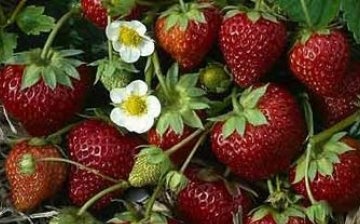Strawberry berry: what you need to know for an excellent harvest
Juicy and fragrant strawberry berry, in addition to indescribable taste sensations, gives us many benefits. It contains many vitamins and minerals that are used for vitamin deficiency. Normalizes bowel function and improves metabolism, which promotes recovery from gastrointestinal diseases.
Strawberries are perennials that yield a good harvest up to 4 years in one place. Therefore, the choice of a landing site should be taken seriously so that you do not have to transplant it later. It's good if it is:
- Open, sunny location, away from trees and bushes.
- A place with a slight slope to drain excess moisture.
- The place is not in the lowlands (cold air accumulates there).
- Place after onions, greens, grains, or legumes.
- Loamy, sandy loam soil.
You can only plant strawberries in winter. If you expect a spring planting, then apply fertilizer to the garden even the previous fall. The planting itself is best done in early spring, otherwise it will develop more slowly.
For planting in July-August, choose a cloudy, rainy day. Water abundantly for ten days after planting, constantly mulching the soil. In the heat, they cover it, for example, with branches with leaves.
From late August to mid-September, the autumn period lasts for planting strawberries. It is dangerous to do this later, since, without having time to take root, it can be damaged by frost.
What negatively affects the cultivation of strawberries?
- Shading
- Excessive moisture
- Frost
- Precursors such as potatoes, tomatoes, cucumbers, cabbage
- Soil rich in lime, waterlogged or overly acidic
In addition to all of the above, you also need to properly plant the bushes in the holes. The so-called "heart" should be neither higher nor lower, but exactly at the level of the soil. If everything is provided and done correctly, the strawberry berry will certainly delight you with its rich color, and unsurpassed aroma, and incomparable taste.






